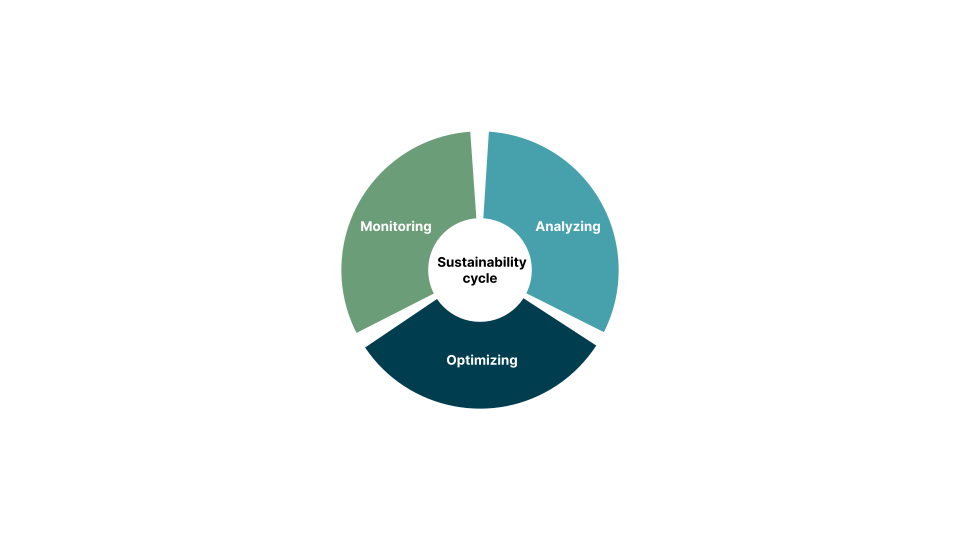As more businesses adopt cloud services, the cost and climate impact of these services are also increasing. The carbon footprint of the cloud surpasses that of the airline industry on its own, increasing by 9% year on year. The electricity consumed by a single data center is equivalent to that used by 50,000 households. Under the dual trends of sustainable development and cost optimization, enterprises need to rethink their IT strategies and use cloud services more responsibly.
The definition of responsible technology is the active consideration of values, unintended consequences and potential negative impact of technology. In the context of the use of cloud, it means enterprises need to develop policies, governance, and practices that minimize both cost and carbon emissions while maximizing business value.
This requires action at various levels, including the organizational, team and employee level.
Organizational: Enterprises need to incorporate the cost and carbon emissions of cloud services into their operational goals, continuously monitor progress, and set up governance mechanisms.
Team: Teams should consider sustainability, cost and carbon emissions when choosing a cloud service provider.
Employee: Employees should also be aware of best practices in architecture design and cloud service usage to reduce waste and apply green practices.
Achieving responsible use of cloud services is an ongoing process that requires changes in people, culture, technology and other aspects of the enterprise's cloud service usage strategy. In this blog post we’ll take a look at how Thoughtworks approaches responsible cloud in the context of its internal systems, before exploring some of the concepts that enable it.
Thoughtworks internal IT case study: Responsible cloud
Across Thoughtworks, sustainability is top of mind. This case study outlines how the Talent Development Products team from our internal IT function, TechOps, took action in 2022 with the sustainable cycle. At the end of the program, the team had achieved approximately 60% reduction in emissions across their four products which equates to a 46% reduction in cost.
Key milestones:
Implementing the open source Cloud Carbon Footprint (CCF) tool to analyze and identify zombie workloads.
Adjusting the cluster and configurations to optimize the use of cloud resources.
Switching to more efficient architecture for high impact services.
The team worked on the carbon reduction initiative in parallel with their daily regular work, spending 22 days over nine months through a small daily effort. The investment was paid back within four months after the end of the program. However, the team recommends a focused effort, which would have identified the same carbon and cost reduction benefits and achieved a similar return on investment much faster.
Sustainable cycle: Monitoring - Analyzing - Optimizing
How did we accomplish this? What was critical was something we call a sustainable cycle (monitoring - analyzing - optimizing) that helps manage costs and carbon emissions collaboratively within and across teams. Let’s explore how it works in more detail.


Continuous monitoring and improvement of cloud service costs and carbon emissions are essential for sustainability. To streamline this process, companies can use carbon tools provided by cloud service providers or use the Cloud Carbon Footprint open-source tool. Teams can then use data visualization to quickly understand their cloud service usage and promote optimization measures.
The next step is to analyze the data and drill down by identifying overall trends in cloud service usage and any peaks or abnormalities. Teams can ask critical questions such as whether the chosen computing service is appropriate, whether cloud services are underutilized, and whether there are zombie workloads. The Green Software Foundation (GSF) has also released green software principles and patterns, providing practical recommendations for software practitioners to optimize cloud services.
After analyzing the data and identifying opportunities for optimization, companies can formulate and implement specific optimization activities. There are two parts needed:
Create an optimized path. Optimize the path by prioritizing tasks based on business needs. Group tasks and implement step-by-step. Plan three types of work:
a. Low-hanging fruit (e.g. reducing task frequency, clearing zombie loads)
b. Quick impact tasks (e.g. compressing transmitted data, rearranging scheduled tasks)
c. High-impact initiatives (e.g. selecting greener cloud services, redesigning architecture, refactoring code)
Incorporate optimization tasks into project plans according to team priorities for effective implementation.
2. Improve team cost and carbon emission awareness and integrate responsible cloud service practices into daily work processes. Companies can provide training courses and certification exams, such as those offered by the Linux Foundation and FinOps Foundation, to enhance team members' understanding of cloud costs and carbon reduction.
To sum it up, by continuously monitoring cloud service costs and carbon emissions, understanding the data and implementing optimization measures, companies can reduce their carbon footprint, save costs and promote sustainability. By improving team awareness and integrating responsible cloud service practices, companies can make sustainability a part of their culture and contribute to a better future.
Conclusion
The responsible use of cloud services is critical for both cost optimization and carbon reduction. By implementing a sustainable cycle of monitoring, analyzing and optimizing, companies can effectively manage costs and carbon emissions. It requires organizational commitment, team collaboration and employee awareness. Through continuous improvement and integration of responsible cloud service practices, organizations can contribute to sustainability and create a better future. If your organization is interested in improving its carbon footprint through cloud usage, reach out to us for assistance.
Disclaimer: The statements and opinions expressed in this article are those of the author(s) and do not necessarily reflect the positions of Thoughtworks.


















